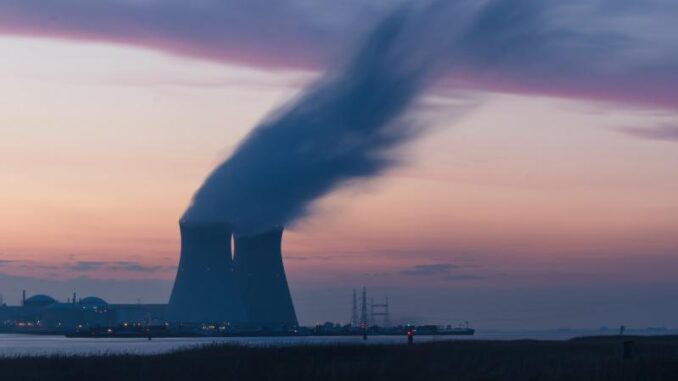
More AI/data center yelling – we’d better pay attention to the energy consequences
The energy world has been in turmoil for quite some time, though the drama has been much more pronounced over the past decade, where it has been buffeted by some enormous crosswinds. The most prominent of these was that, for the first time in history, powerful groups decided they wanted to demolish it, incredulously somehow unable to grasp the consequences. (I blame too many Marvel comic movies, which abandon the pretext of any known human ability solving a problem, and today’s youth seem to have adopted magical solutions as the ones worth holding out for, but whatever.)
Just as everyone was getting cranked up on the energy transition, a Western imperative, political passion projects have now taken a back seat to several billion hungry people’s vision for a better future. The developing world really started flexing its muscles, not just as an exporter of cheap crap to the west but as economic entities unto themselves, and their energy consumption began to skyrocket (with many, many countries yet to really join the party – imagine, for example, how many cruise ships will ply the oceans once Africa, India, Pakistan etc. reach western income levels). Renewables spending exploded, but so did shale development, and for the past few years we’ve been locked into an uneasy but somewhat steady cycle whereby the world adds as much energy as it can in every form before 8 billion people gobble it up voraciously, and Bob’s your uncle. Not exactly boring, but we could see how things were unfolding, and how commodity prices were ensuring that the world’s supplies remained healthy, though not so high as to cause demand destruction.
Then late last year, something landed into the scene like the Tunguska Fireball. (Oh, ok…). This new something hasn’t levelled forests for 40 square miles like Tunguska did, but the impact is going to be even bigger, even if it takes a year or two for the shock waves to fan out.
The new fireball is the arrival of AI, its widespread acceptance and adoption, and the view that it is now a competitive imperative. The West is now wrestling with a new energy demand boom that reflects what the developing world is going through, though the developing world wants energy development so they can have a fridge and the West wants it so they can automate legal contracts and make fake videos. On all these fronts, thoughts of living with scarcity are unacceptable, despite the gulf in necessity.
Regardless, both the speed at which AI demand is increasing and its associated repercussions are about to get very significant.
For the last 6-9 months, as the story really developed, the AI projections were somewhat hypothetical – many companies announced plans to get heavily into AI, but we didn’t know what it would mean. There was a focus on sort of the downstream of it, how the end-use impacts were going to impact humanity. The upstream end, the energy consumption, was, in the general discourse, kind of meh – it’ll all work out.
Well, the first energy chickens are coming home to roost. They might be AI chickens, but their feed bill is not going to be virtual.
Energy observers have been reading the endless stream of AI headlines, wondering where the energy was going to come from. Consider Amazon, which recently announced that they would be spending $100 billion over the next decade on AI data centres. And though Amazon is one of the biggest, there are hundreds of companies on the same AI-frenzied path. They all simply must jump on the train, or risk getting left behind. Almost every industrial field is joining, as are government agencies.
Many modern industrial western behemoths have pledged to facilitate their growth in a green way, which – the current rate of AI growth – is incompatible with a rapid (or any sort of) energy transition. Renewables have not been able to keep up with rising energy consumption levels before the AI wave, and these cumulative trillions in AI investment only move the goal posts farther away.
So AI developers are doing the logical thing, in the time frame they want their AI up and running (i.e., right now). They are going right to the energy source to build data centres. Some are building near natural gas fields (see: Ohio’s exploding AI demand, right near the massive Appalachia gas field). That’s all well and good, because new wells can be drilled to meet that demand.
But there’s some very sobering news for the country’s other power consumers. AI developers have zeroed in on, logically enough, the only true 24/7 source of emissions free energy: nuclear power.
The Wall Street Journal just recently noted the phenomenon: “The owners of roughly a third of U.S. nuclear-power plants are in talks with tech companies to provide electricity to new data centers needed to meet the demands of an artificial-intelligence boom.”
Here’s Amazon Web Services in action. AWS is building the Cumulus Data Assets center, a 1,200-acre campus co-located with the 2.5 GW Susquehanna nuclear plant in Pennsylvania. The data center is expected to consume 960 MW, or about 40 percent of the nuclear plant’s output, reliable, baseload, clean power that will become unavailable to the grid.
Consider that this new AWS demand arose just in the past few months, and that last year the regional grid operator PJM had the following to say in its annual report: “While electricity demand rises, more than 20% of PJM’s generators (~40GW) are at risk of retiring by 2030… As a result of this research, PJM established a new initiative Ensuring a Reliable Energy Transition where we clearly articulated our reliability concerns.”
Again, note that PJM was freaking out well before AI demand started accelerating so rapidly.
What makes this new AI demand so concerning from a grid perspective is that demand can co-locate with power facilities, and potentially bypass the entire transmission/delivery system (if regulations allow), meaning that critical power supplies might not ever even make it to the grid. Users and generators generally prefer that scenario since it cuts out a middle participant, and the pie gets shared only two ways instead of three.
The media still seems lost in the fog as they have been for a while. Ford’s CEO gave quite an ironic talk the other week that shone a light on the inability of the mainstream to grasp the consequences. At the Aspen Ideas Festival, Ford CEO Jim Farley gave a lengthy talk about EVs, and how they are the future, and the media lapped it up, with every news outlet that covered the story zeroing in on Farley’s positive view of EV growth. Leave it to wise and thoughtful independent observers to pick up the nuance: energy analyst extraordinaire Dan Tsubouchi noted Farley’s alarm midway through the talk, something no one else seemed to: “Our grid can’t handle what we have today. Are we going to build 20% more power plants to handle all these AI data centers? Or are the companies going to start to create their own power centers? What do we feel as a society when a private company operates a private power plant?”
What makes Farley’s comments so ironic is that the central theme of his talk was about how Ford would soon be making $30,000 EVs, which would help lead to widespread adoption, which would exacerbate power shortages that he rightly observes are on the way.
It should be apparent to anyone that the grid needs all the help it can get, from any energy source. To watch those in charge make the decisions they are with respect to unrealistic goals and slogans is stomach churning to watch. Of interest to BOE Report readers, do note that natural gas is the only solution in the next 5-10 years to handle this crunch.
On a lighter note and on the other hand, if you want to see blistering competence from an unexpected source…
Bees can do what now?
Amazing news out of the bee world. I had no idea but apparently the little guys have very sensitive noses, and can smell the craziest stuff. I guess it makes sense, since they sniff out flowers for a living, but those can’t be challenging targets, with their bright colours and strong scents, but it looks like their little schnozes can do far far more.
Apparently bees have been for some time now able to sniff out bombs. The U.S. Energy Department’s Los Alamos facility researched this for 18 months, training bees in the old Pavlovian way – rewarding bomb-sniffing with sugar water. “We are very excited at the success of our research as it could have far-reaching implications for both defence and homeland security,” said a Los Alamos research scientist [his swollen head covered in welts] (I’m guessing).
That research was conducted in 2005-6, so apparently they made no headway on that project, but if they did how would we know? Would they have little sinister black uniforms?
Anyway, new research has now shown that bees can smell lung cancer on patients’ breaths. Whoa. Utterly amazing, and wonderful to hear. I hope this leads to great places… but setting all that aside one must simply ask the question: What on earth goes on in research labs? Is it like Jackass for Nerds? How on earth would anyone come up with the idea to have bees sniff people’s breath, and then test that against a random bunch of illnesses?
I’m not mocking them, not by any means, and God bless ‘em. Reading about these developments is like the very best of science, curious minds seeking novel solutions to significant problems. No dogma, no jabbering about trusting science, nothing but new knowledge, new tools for humanity, new possibilities, all with no cost other than the enslavement of bees, which may or may not be problematic; I don’t really know how bees feel about being used in such a way. Hopefully they can get to the forefront of bee DEI without having to go through decades of drama, trauma, and having to form unions to get a safe and supportive work environment. I’m going to go buy some honey.
Take the Survey at https://survey.energynewsbeat.com/






